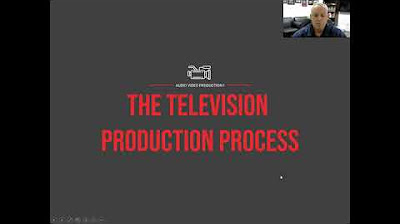Kegiatan Ekonomi Pelaku Produsen - EDURAYA MENGAJAR EKONOMI KELAS X
Summary
TLDRThe video script offers an insightful look into a tofu factory's production activities. It explains how tofu is made from soybeans and highlights the various factors of production involved, such as land, labor, and capital. The script delves into the different types of labor, including educated and uneducated workers, and the role of capital in the form of machinery and raw materials. It also touches on the concept of fixed and variable capital, as well as the importance of technology in the production process. The script concludes by discussing the producer's efforts to optimize production efficiency and the relationship between the value of production factors and the output produced.
Takeaways
- 🏭 The script discusses a tofu factory located near the speaker's house, highlighting the various activities that take place within it.
- 🌾 Tofu is produced from soybeans, emphasizing the agricultural origin of the factory's main product.
- 👷♂️ The factory employs different types of labor, including educated and trained workers like accountants and managers, as well as unskilled laborers like cleaners and sweepers.
- 🚚 The script mentions a truck driver as an example of skilled labor, indicating the importance of training and experience in certain roles.
- 🔧 The factory uses various production tools, which are categorized as capital resources, or 'modal' in the script.
- 💼 The script explains the concept of capital resources, dividing them into four types based on their function, nature, risk, and form.
- 🏢 The factory owner has shares and bank deposits, which are considered as 'modal perseroan' or corporate capital in the script.
- 🌉 The script also mentions 'modal masyarakat' or social capital, such as roads and bridges, which are part of the infrastructure.
- 🔥 The factory uses solar energy to power its machines, which is considered 'modal lancar' or circulating capital because it is used up in the production process.
- 📊 The script introduces the concept of production function, which relates the output (Ky) to capital (C), labor (L), resources (R), and technology (T), emphasizing the efficiency of factor usage in production.
Q & A
What is the main activity happening in the factory mentioned in the script?
-The main activity happening in the factory is the production of tofu, which is made from soybeans.
What is referred to as a factor of production in the context of the factory?
-A factor of production in the context of the factory includes land, labor, capital, and entrepreneurship.
Why is the land where the factory is built considered a factor of production?
-The land where the factory is built is considered a factor of production because it is a natural resource provided by nature and is essential for the production process.
What types of labor force are mentioned in the script as part of the production factors?
-The script mentions skilled labor such as accountants and managers, and unskilled labor such as cleaners and sweepers, as part of the production factors.
What does the script say about the truck driver's role in the production process?
-The truck driver is mentioned as part of the skilled labor force, indicating that they require training and experience for their role in the production process.
What are the different types of capital mentioned in the script?
-The script mentions different types of capital, including equity (stock), bank deposits, and infrastructure like roads and bridges.
How is the term 'fixed capital' defined in the script?
-Fixed capital in the script refers to capital that can be used more than once, such as buildings and production machinery in the factory.
What is the difference between 'variable capital' and 'fixed capital' as described in the script?
-Variable capital is the capital whose amount changes according to the quantity of goods produced, like raw materials. Fixed capital is used repeatedly in the production process, such as machinery and buildings.
What is the role of solar energy in the factory's production process according to the script?
-Solar energy is used to power the machines in the factory, and it is considered a form of circulating capital because it is used up in the production process.
How does the script explain the relationship between the factors of production and the output produced?
-The script explains that the value of the product produced depends on the value of the factors of production used in the production process, indicating a close relationship between them.
What is the term used in the script to describe the function of production?
-The term used to describe the function of production is 'production function,' which is represented by a formula in the script.
Outlines

Cette section est réservée aux utilisateurs payants. Améliorez votre compte pour accéder à cette section.
Améliorer maintenantMindmap

Cette section est réservée aux utilisateurs payants. Améliorez votre compte pour accéder à cette section.
Améliorer maintenantKeywords

Cette section est réservée aux utilisateurs payants. Améliorez votre compte pour accéder à cette section.
Améliorer maintenantHighlights

Cette section est réservée aux utilisateurs payants. Améliorez votre compte pour accéder à cette section.
Améliorer maintenantTranscripts

Cette section est réservée aux utilisateurs payants. Améliorez votre compte pour accéder à cette section.
Améliorer maintenantVoir Plus de Vidéos Connexes

PROSES PRODUKSI TAHU ATB/RTB PADANG SUMATERA BARAT

How the dry pet food is made? Virtual tour of Akvatera - dry pet food factory

MENGHITUNG BIAYA PRODUKSI

A Day in the Life of a Data Analyst (2023)

‘Semiconductor Manufacturing Process’ Explained | 'All About Semiconductor' by Samsung Semiconductor

The Television Production Process
5.0 / 5 (0 votes)
